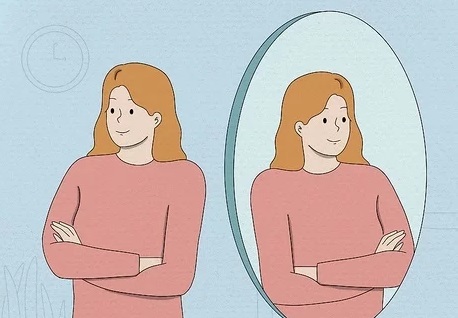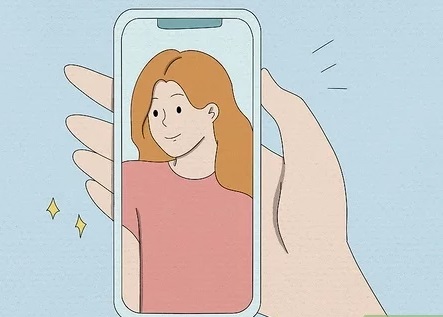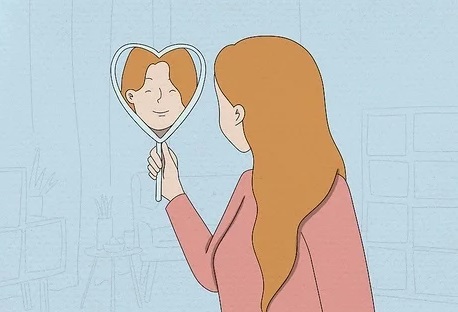Do People See You Inverted? – Click For The Full Scoop!

In a world shaped by mirrors and screens, understanding how individuals perceive themselves inverted unveils a captivating journey through psychology, culture, and technology.
Perception varies; mirrors, social media, and culture influence self-image. Addressing challenges involves promoting positivity, embracing diverse experiences, and leveraging technological advancements.
Join us for this journey.
Table of Contents:
Understanding Inversion Perception – Let’s Read!
The human brain is a remarkable organ, capable of processing vast amounts of visual information. However, when it comes to self-perception, things can get intriguingly complex.

Our brains interpret images based on learned patterns, and this includes how we see ourselves.
For example, we can often perceive ourselves to be smaller than other people, or taller, even though our actual height may be the same. This is known as inversion perception.
This phenomenon is an example of how our brains can distort our perception of reality. It’s important to remember that our self-perception is not always accurate, and it’s important to be mindful of this when making decisions.
Read Also: Dr. Zena Al-Adeeb – Explore The Details With One Click!
Mirror Reflections and Self-Image – Here To Know!
Mirrors play a pivotal role in shaping our self-image. They serve as reflective surfaces that sometimes distort or amplify certain features, influencing our perception of beauty and self-worth. This section explores the psychological impact of mirrors on our daily lives.
When we gaze into a mirror, we aren’t just seeing a reflection; we are confronting a subjective representation of ourselves. The mind, influenced by societal norms and personal biases, can lead to a distorted perception.
For instance, a slight asymmetry in our features might be magnified, contributing to a negative self-image. This distortion isn’t solely a result of the mirror; it’s a product of our brain’s interpretation.
Moreover, the historical significance of mirrors as symbols of vanity and self-reflection adds layers to our perception. In literature and art, mirrors often represent introspection and self-awareness.
Understanding this symbolic context enhances our appreciation of the multifaceted role mirrors play in shaping how we see ourselves.
Social Media and Inverted Self-Image – Gain Knowledge!
With the rise of social media, the way we perceive ourselves has taken on new dimensions. The constant exposure to curated and edited images on platforms like Instagram and Snapchat has led to a surge in the prevalence of inverted self-images.
We’ll delve into the societal implications of this digital phenomenon. The carefully crafted images we encounter on social media often present an idealized version of reality. Filters, editing tools, and strategic angles contribute to an altered perception of beauty and perfection.
As individuals consume these images, the subconscious comparison to these unrealistic standards can lead to feelings of inadequacy and a distorted self-image. This raises important questions about the impact of social media on mental well-being and the need for a more authentic representation of individuals online.
Moreover, the phenomenon of inverted self-image on social media is not just an individual struggle; it has societal implications. The pursuit of perfection perpetuated by digital platforms can contribute to a culture of comparison and judgment.
Addressing this societal issue involves not only individual awareness but also collective efforts to promote authenticity and celebrate diverse representations.
Cultural Perspectives on Inversion – Go In Depth!
Perception of self varies across cultures, influenced by historical, societal, and anthropological factors. This section examines how different cultures perceive self-image, shedding light on diverse perspectives that challenge the universality of inverted self-perception.

Cultural norms and values significantly shape how individuals view themselves. In some cultures, specific physical traits may be celebrated, while in others, conformity to certain standards may be emphasized. Understanding these cultural nuances is crucial for appreciating the diversity of self-perception globally.
For example, in cultures where communal harmony is valued, the emphasis on collective well-being might influence individual self-perception. In contrast, cultures that prioritize individualism may foster a more independent sense of self.
Exploring these cultural variations adds depth to the conversation about inverted self-perception, highlighting the need to consider cultural context when discussing self-image.
Additionally, historical perspectives on beauty and self-worth play a role in shaping cultural attitudes toward self-perception.
Ancient cultures often had distinct ideals of beauty that might differ significantly from contemporary standards. Analyzing these historical shifts provides insights into the evolving nature of beauty ideals and their impact on individual self-perception.
Read Also: Blue Whale Bitten In Half – Unraveling The Mystery In 2024!
Challenges of Inverted Self-Image – Go In Depth!
While occasional inverted self-perception may be a normal aspect of human cognition, persistent negative self-image can lead to significant challenges, including mental health issues. It’s crucial to address the potential consequences and provide support for individuals navigating these challenges.
Negative self-perception can contribute to anxiety, depression, and low self-esteem. The societal pressure to conform to certain beauty standards, exacerbated by media and advertising, plays a role in shaping these perceptions. Recognizing and challenging these societal norms is an essential step toward fostering a more positive and inclusive environment.
Furthermore, the challenges of inverted self-image extend beyond individual well-being. Societal perceptions influenced by pervasive beauty ideals impact relationships, professional environments, and overall societal dynamics.
Addressing these challenges requires a holistic approach that includes education, media literacy, and the promotion of diverse representations in various fields.
The Influence of Personal Experiences – Explore It!
Personal experiences play a pivotal role in shaping individual perceptions, and anecdotes can provide valuable insights into the complexities of inverted self-image. By sharing stories of personal struggles and triumphs related to self-perception, individuals can connect on a human level, fostering empathy and understanding.
For instance, someone who has overcome body image issues may share their journey, providing inspiration and support for others facing similar challenges. These narratives humanize the discussion around self-perception, emphasizing that it’s a shared experience with varying paths to self-acceptance.
Moreover, the intersection of personal experiences and cultural influences is crucial to understanding the diverse ways people navigate inverted self-perception. Individuals from different backgrounds may have unique stories that reflect the complex interplay between personal narratives and broader cultural contexts.
Practical Tips for Positive Self-Perception – Step By Step Guide!
Cultivating a positive self-image requires intentional effort and self-reflection. This section provides practical tips for individuals seeking to enhance their self-perception and promote overall well-being.
- Practice Self-Compassion: Be kind to yourself, recognizing that everyone has unique qualities and imperfections.
- Limit Social Media Comparisons: Take breaks from social media to reduce exposure to idealized images and comparisons.
- Surround Yourself with Positivity: Engage with supportive and uplifting communities that foster a positive self-image.
- Focus on Health, Not Perfection: Shift the focus from achieving perfection to maintaining physical and mental well-being.
- Seek Professional Support: If negative self-perception is impacting mental health, consider seeking guidance from mental health professionals.
Visual Arts and Inversion Perception – Ultimate Information!
Artists have long explored the concept of inversion in their creative expressions. This section delves into how artists use inversion as a tool for evoking emotions, challenging perceptions, and contributing to the broader discourse on self-image.

Art has the power to provoke thought and elicit emotional responses. Through techniques like mirroring, distortion, and symbolic representation, artists can manipulate perception to convey deeper meanings. Exploring the intersection of visual arts and inversion perception adds a layer of cultural and creative insight to the ongoing dialogue.
Furthermore, the role of art in challenging societal norms and promoting alternative perspectives is significant. Artists often act as cultural critics, questioning established ideas of beauty and self-worth. Analyzing artistic expressions of inverted self-image allows for a nuanced understanding of the ways creativity intersects with personal and societal perceptions.
Read Also: Blue lock Chapter 224 Release Date – Complete Guide In 2024!
Frequently Asked Questions:
1. How does art influence inverted self-image?
Art manipulates perception, challenging societal norms. Artists creatively explore inverted self-image, offering nuanced perspectives that intersect with personal and cultural perceptions.
2. How can one enhance positive self-perception?
Cultivate self-acceptance, practice self-care, limit social media comparisons, surround yourself with positivity, and consider seeking professional support if necessary.
3. Is technology helping correct inverted self-perception?
Advancements in technology, including virtual reality and perception correction tools, show promise in helping individuals adjust their self-perception.
Conclusion:
In the end,
Diverse factors, including mirrors, social media, and cultural influences, contribute to the variation in perception and self-image. Overcoming challenges entails fostering positivity, embracing diverse experiences, and harnessing technological advancements.
Read Also:




